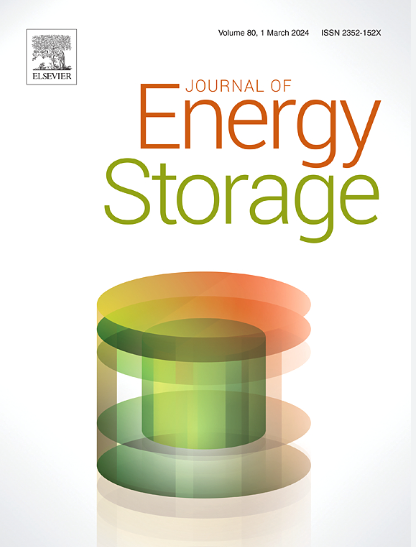Assembly of high-performance zinc-ion hybrid capacitor using soy residue-derived porous carbon as cathode and HCl treated zinc foil as anode
IF 8.9
2区 工程技术
Q1 ENERGY & FUELS
引用次数: 0
Abstract
As a secure energy storage device, zinc-ion hybrid capacitors (ZHCs) have garnered significant research attention. Prior investigations have demonstrated that the performance of ZHCs is profoundly impacted by the structural characteristics or compositional design of both the anode and cathode materials, as well as the electrolyte. Consequently, this study employed porous carbon derived from soy residue as the cathode, and HCl treated zinc foil as anode to construct ZHCs. Influence of the preparation condition of the soy residue-derived porous carbon, and the morphology of the zinc foil anode on the assembled ZHCs performance was systematically explored. Utilizing a soy residue-derived porous carbon material with the specific surface area of 3216.2 m2 g−1 as the cathode, and a zinc foil anode featuring surface cracks markedly improved the performance of the fabricated ZHCs. The specific capacitance and power density of the assembled ZHC, incorporating the aforementioned cathode and anode, achieved 514.6 F g−1 and 323.5 Wh kg−1, respectively. To ensure the cycling stability of ZHC, the zinc electrode was protected using nickel foam. The assembled ZHC maintained a 100 % specific capacitance retention after 5000 cycles. For the advancement of high-performance ZHCs, it is imperative to refine the structural attributes of the porous carbon cathode and zinc foil anode, alongside optimizing the zinc anode protection method.

求助全文
约1分钟内获得全文
求助全文
来源期刊

Journal of energy storage
Energy-Renewable Energy, Sustainability and the Environment
CiteScore
11.80
自引率
24.50%
发文量
2262
审稿时长
69 days
期刊介绍:
Journal of energy storage focusses on all aspects of energy storage, in particular systems integration, electric grid integration, modelling and analysis, novel energy storage technologies, sizing and management strategies, business models for operation of storage systems and energy storage developments worldwide.
 求助内容:
求助内容: 应助结果提醒方式:
应助结果提醒方式:


